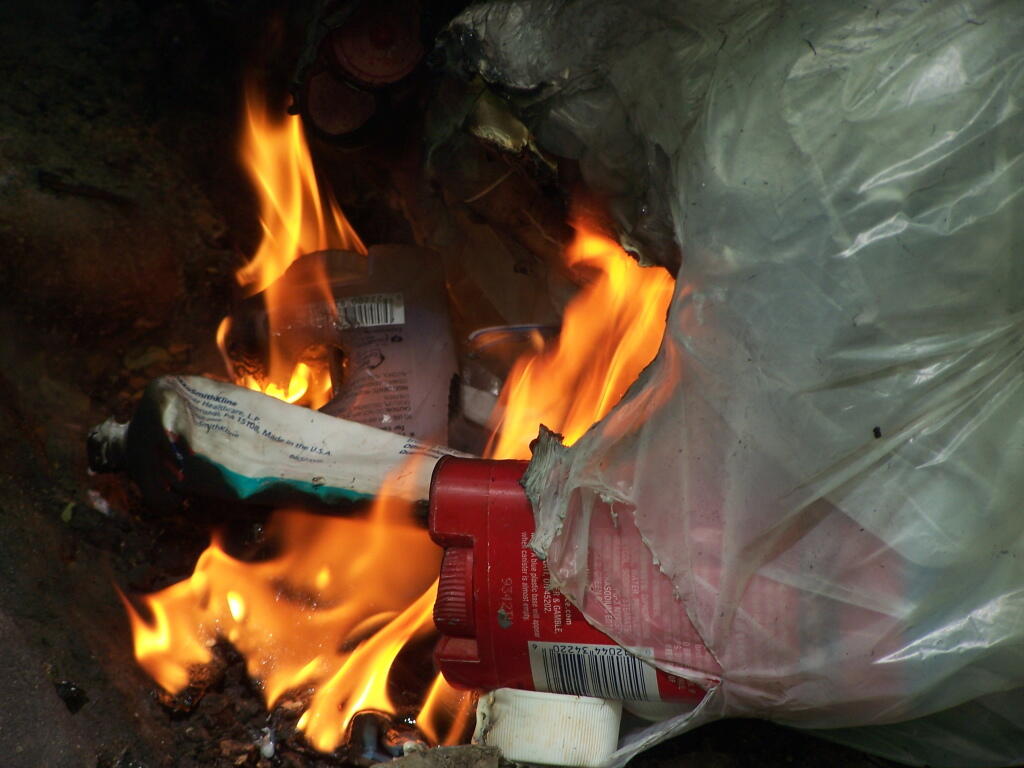Waste Management and Advanced Disposal working toward multi-state divestiture plan | Waste Dive
Solid Waste
Garbage
Trash from the bathroom that I found scattered along the lawn.
Taken on Tuesday January 16, 2007 at Trash.The fiscal hazards facing New York City’s recycling program
Can you be a zero-waste advocate and burn your own trash? 🔥
Can you be a zero-waste advocate and burn your own trash? 🔥
I am a member of several zero-waste groups. They attract a wide variety of people, some urban-hipsters, some rural farm homesteader types. Inevitably there is some culture clash between the two. One of them over whether or not you can be a zero-waster and have a burn barrel at your rural home or farmstead for non-recyclable, unavoidable packaging and similar trash.🛢
There is no question that anything you burn can’t count as zero waste. Anything that gets burned ends up becoming pollution, be it carbon dioxide or a wide variety of chemicals. But on the other hand, if you are working to aggressively reduce your waste, forgoing weekly trash pick up in favor of reduction of consumption, reuse, burning, composting, and occasional trips to the recycling center, your doing a lot more to reduce your waste output then the typical urban consumer.♻️
Zero-waste living is ultimately not about how you dispose of your trash. It’s about reducing it all together, meaning less that goes to the landfill, the municipal incinerator, the compost pile, or the old burn barrel out back. It’s about living with less, fully utilizing what you have, creating more efficiency in your life, so ultimately your disposal method has a lower impact on the environment.🗑
Recycling progress in public housing eludes city officials
New York City’s public housing stock is teeming with trash — chutes stuffed beyond capacity, stairwells strewn with litter, bins for regular refuse overflowing with misplaced cans and bottles.
With 173,762 apartments whose residents virtually never recycle, the New York City Housing Authority offers one of the single best opportunities for Mayor Bill de Blasio to get a handle on the city’s runaway trash problem.
Yet as of last April, public housing residents were separating just 1.5 percent of the cans and bottles that make up about one-third of their trash stream — a function of decades of neglect by city officials who did not bother installing adequate recycling bins until the threat of a lawsuit.
Separation of food scraps that comprise another one-third of the garbage haul has been scarce, according to the housing authority’s 2019 waste management report.
“The consensus among NYCHA residents and staff alike is that garbage is everywhere, disorganized, and much too visible an intrusion on everyday quality of life,” the report stated. “NYCHA residents deserve better.”
The city’s residential waste challenges transcend the housing authority. Plastic Amazon packaging, “fast fashion” shopping and relatively meager penalties for recycling violations contribute to New York underperforming many other large American cities in recycling its garbage.
Disposal capacity crunch paves way for more industry consolidation and price increases, per report | Waste Dive
WBJ's latest annual report, a mix of new and previously released data derived from facilities around the country, offers an in-depth look at the implications of looming capacity crunches in certain areas. While permitted expansions and possibly even new sites can be expected to change that equation, they haven't kept up at the same pace to offset capacity losses in recent years. And even though some U.S. landfills still have many decades or more of space left, it is becoming increasingly complicated to export the waste to wherever that capacity may be.
The Northeast is still the only region with net waste exports, according to the report. And as the area's list of active MSW landfills continues to shrink – with minimal appetite for expansions, let alone new sites – it is widely expected this trend will continue. The Northeast's concentration of incinerators and other waste-to-energy facilities are also largely at capacity, with similar resistance to any expansions.
House plans to take up sweeping new PFAS bill with waste implications | Waste Dive
The U.S. House of Representatives is set to take up a bill (H.R. 535) this week that would nationally regulate at least some per- and polyfluoruoalkyl substances (PFAS).
Among other significant components, the PFAS Action Act of 2019 would require the U.S. EPA to establish destruction and disposal guidance for a range of materials, including landfill leachate, biosolids, and "solid, liquid, or gas waste streams" from facilities that manufacture or use PFAS. It is likely the bill — which is set for a committee hearing on Tuesday afternoon — will see markups reducing impacts to chemical companies.
The GOP-controlled Senate has also shown no interest in taking up the legislation. But disclosures show the waste industry's largest companies are lobbying on PFAS and trade groups have signaled the issue will be an important one in 2020. While some waste companies have been wary of PFAS legislation, others are open to the potential upside. Bill Fahey, a senior vice president with Veolia North America, told Waste Dive in a statement that regulations could create "an interesting and challenging opportunity in the hazardous waste space."

